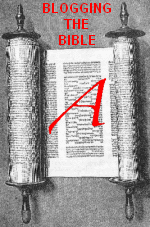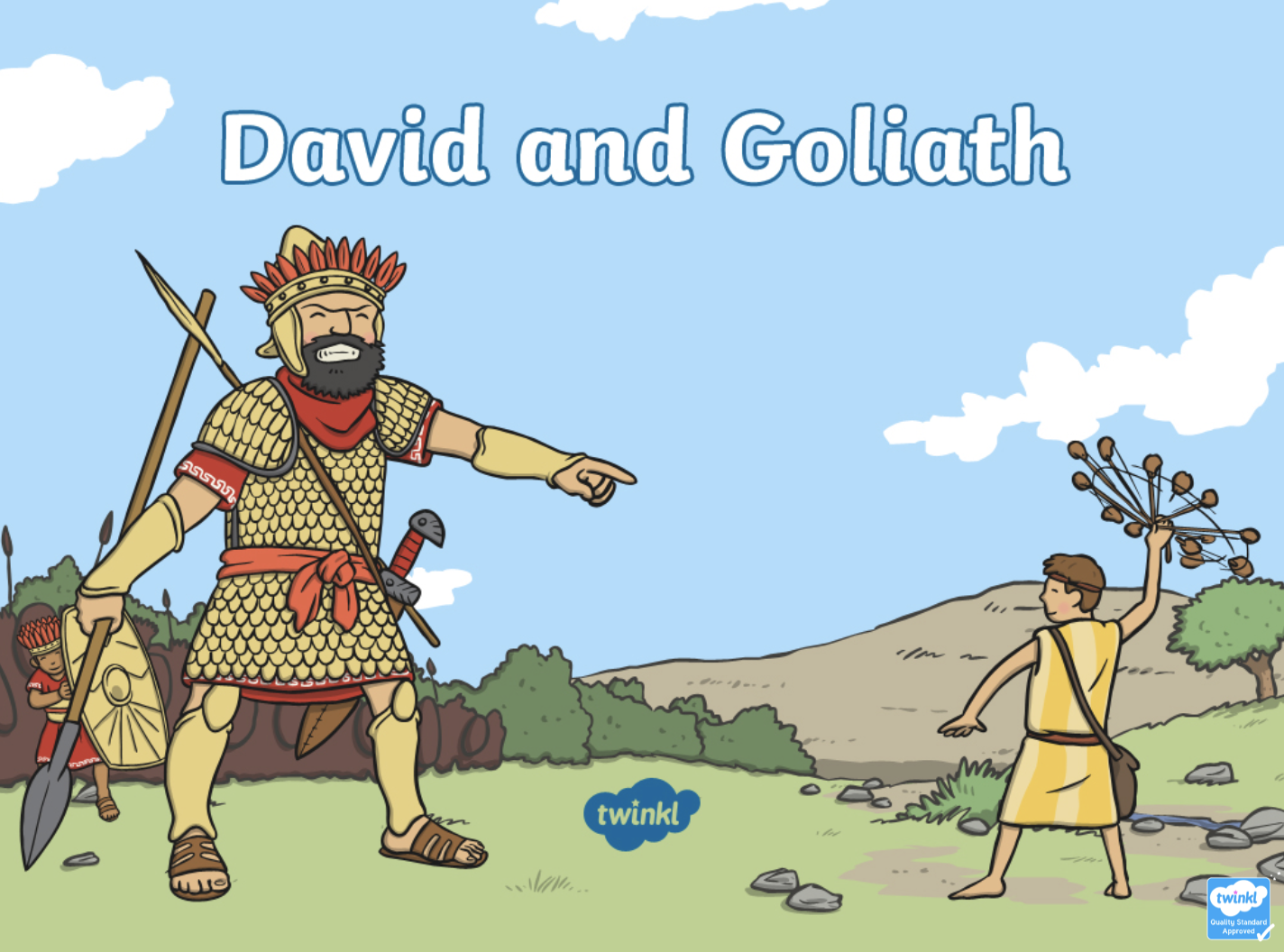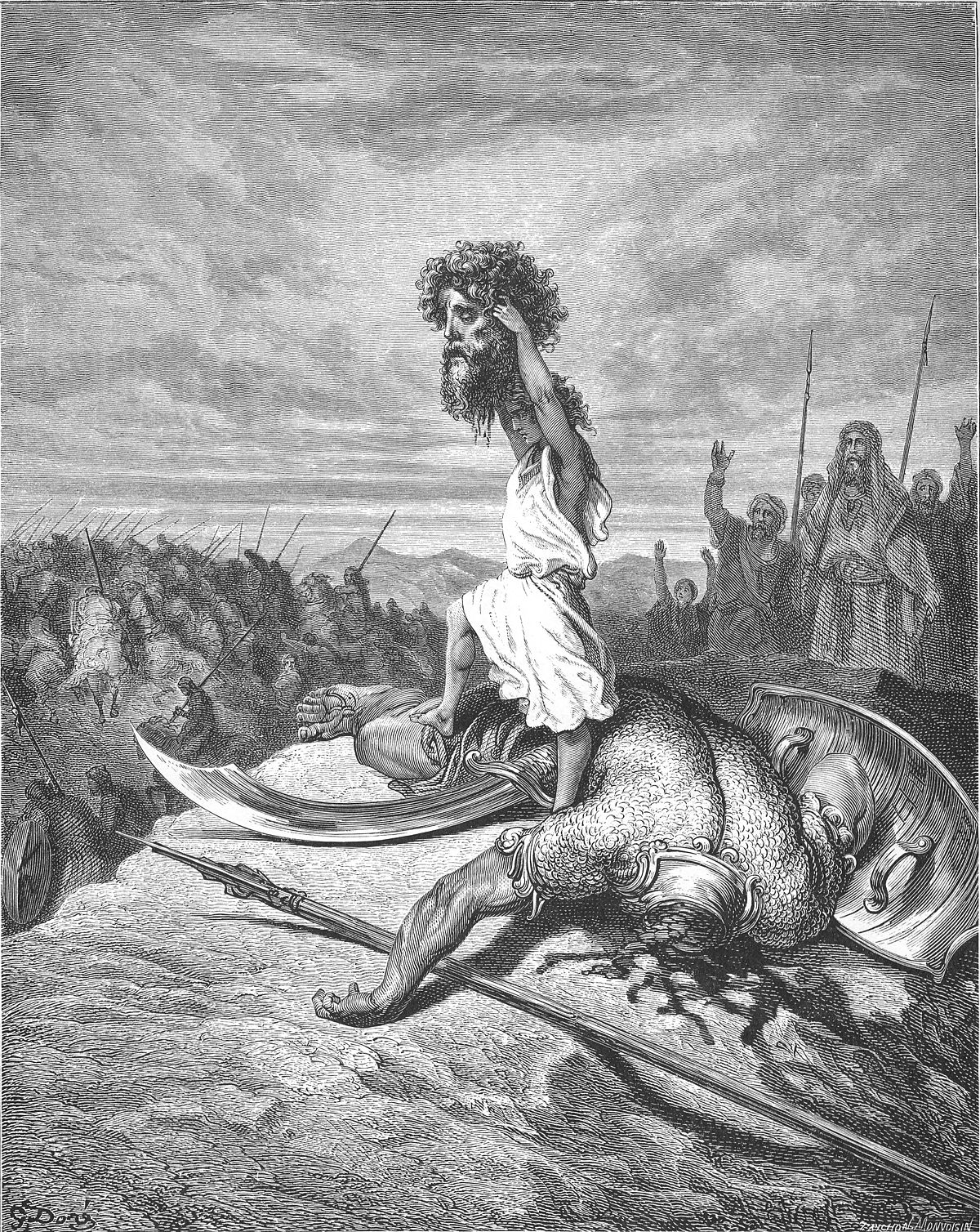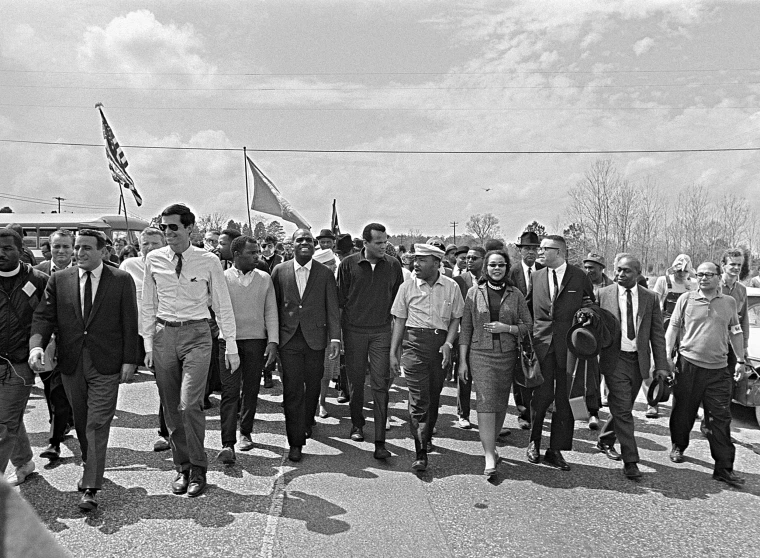 Epic literature often introduces the main character very late in the story. The book of Samuel is one such example: it is almost entirely about King David and yet we haven’t heard a peep about him for the first 15 chapters as instead we are given the “prologues” of Samuel and Saul. Well, the events described finally hit the big-time as we get to one of the most famous stories in the Bible.
Epic literature often introduces the main character very late in the story. The book of Samuel is one such example: it is almost entirely about King David and yet we haven’t heard a peep about him for the first 15 chapters as instead we are given the “prologues” of Samuel and Saul. Well, the events described finally hit the big-time as we get to one of the most famous stories in the Bible.
Two Tales In One
amatic irony as Saul unknowingly is waited on by the next — and rival — king, and everybody’s happy (16:14-23).
- There’s a standoff with the Philistines and a very tall Philistine called Goliath challenges the Israelites to a one-on-one duel. But they are afraid for nobody is his match (17:1-11).
- We are now introduced to David again as if for the first time: “David was the son of an Ephrathite of Bethlehem in Judah whose name was Jesse. He had eight sons” etc etc. His sons are in the Israelite army and he takes provisions to them, finds out about Goliath and asks pointed questions about what will happen to the Israelite who kills him (17:12-30).
- Saul has him brought over and tells him he is just a youth so can’t fight Goliath. There’s no sense given that Saul has met David before but neither does it mention an introduction so we’ll be generous here. David convinces Saul that he has the protection of YHWH and so is allowed to challenge Goliath (17:31-37)
- As per the popular tales in Sunday schools and children’s picture books, David kills Goliath with a slingshot and pebble (17:38-51)
- Saul is very impressed and asks Avner his general: “whose son is that boy?” So this one suggests he really has met David for the first time. David answers: “The son of your servant Jesse the Bethlehemite” (17:52-58).
Again the explanation seems so obvious that even a dolt like me seems able to grasp it. There were two oral traditions about how Saul met David for the first time. The first is the less dramatic, heavy with intrigue tale of how David played the lyre at Saul’s court right under his nose. The second has the fanfare of David vs Goliath, and all the relevant metaphors this reminds us of. The editors have placed both of these side by side. It is not clear whether they expected the readers to see that they are mutually exclusive. The charitable reading is that they did (since it’s so obvious in this case) and so the editors of Samuel were merely trying to collect the relevant and interesting tales about David. In that, they did a good job. But whatever you say, this is completely inconsistent with a single divinely-inspired account.
Unless of course you have such precommitments and then you engage in the usual contortions of harmonisation gymnastics. For instance the rabbinic tradition picks up on Saul not recognising David and so reinterprets the verse to mean that Saul saw David [behaving in a kingly manner], became worried as was natural, and asked Avner about David’s lineage [to see if his lineage will reveal whether he is destined to overthrow him as king]. Of course unless you’re already committed to the idea of the Bible being divinely-inspired, this sounds like a fairly clumsy and post hoc rationalisation.
Goliath’s Height

The story also presents a very nice example of how Biblical takes got exaggerated (I found this through Robert Price). The Goliath of popular conception is an absolute giant, especially if you look at children’s illustrations. However, the Septuagint which is the earliest preserved translation states that he was only 4.5 cubits (2.05m/6.75 ft) tall. Not very impressive, except to a people who had much poorer nutrition than we do and hence were much shorter.
However, the Bible used in Judaism (and most Western Christian translations) is the Masoretic text which dates to a later period and comes out of the rabbinic tradition. By that time, either nutrition had improved or people’s expectations of giants and Biblical wonders increased — or both. Either way, the height given there is a more impressive 6.5 cubits (2.9m/9.5 ft). More here.
A Comic Book Hero
In the paragraph above I used an image from a Simpsons episode which dramatised the story. The episode had a sequence where Bart (as King David) trains up to get the strength to defeat Goliath. We see him doing some ridiculous things including arm-wrestling his sheep. While I thou
However, as usual, the reality is quite different to the story in the popular imagination. When I read chapters 16 and 17 I was struck at how obvious it was that the text was in great disarray. I’m about as far from being a Documentary Hypothesis scholar as could be, but the fact that this section contains two different contradictory text that have been interpolated seems so obvious I’m not sure how anyone could miss it. Here is the order of events with relevant quotes:

- YHWH tells Samuel that since he’s rejected Saul he is to annoint the next king from amongst the sons of Jesse. We are told that Jesse had eight sons. YHWH picks out David and Samuel annoints him (16:1-13).
- The spirit of YHWH departs from Saul and he’s tormented by an “evil spirit from YHWH”. Saul seeks out musicians to soothe him and one of his attendants describes to Saul a David son of Jesse. He is found and employed as a courtier as Saul takes a liking to him. Great drght it was a bit of silliness on the part of the episode writers, they’re actually quite close to the truth. Here’s what David tells Saul when he tries to dissuade him from fighting Goliath because he is just a boy:
But David said to Saul, “Your servant has been keeping his father’s sheep. When a lion or a bear came and carried off a sheep from the flock, I went after it, struck it and rescued the sheep from its mouth. When it turned on me, I seized it by its hair [lit. beard!], struck it and killed it. Your servant has killed both the lion and the bear; this uncircumcised Philistine will be like one of them, because he has defied the armies of the living God. The LORD who delivered me from the paw of the lion and the paw of the bear will deliver me from the hand of this Philistine. (17:34-37a)
So David is starting off as very much a comic book hero. I don’t think the authors intended this as a bit of humour. But to a 21st century reader the image of a little boy pulling a lion by the beard to kill it is about as the Simpsons sequence of David.





0 Comments